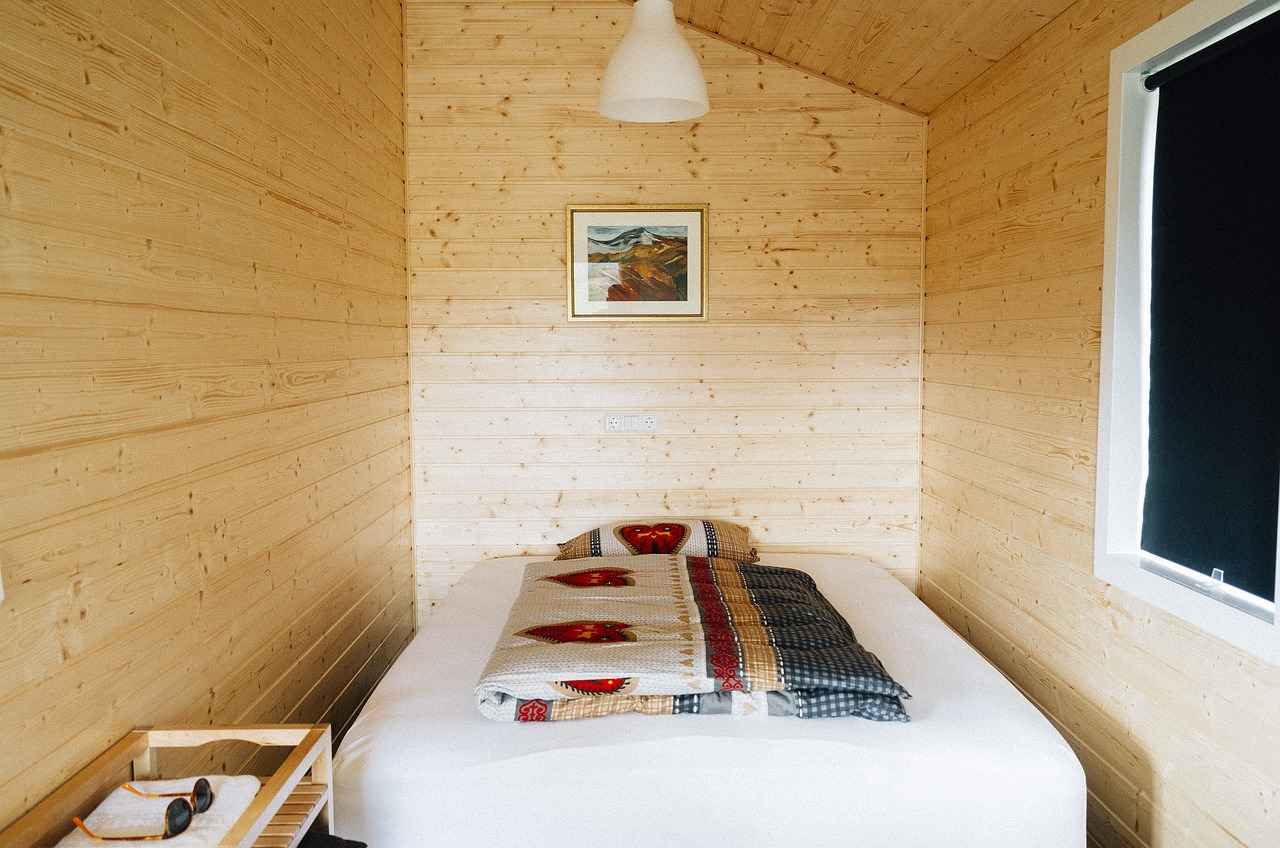This article serves as a comprehensive guide on changing the cabin filter in a Honda Accord. A clean cabin filter is essential for maintaining optimal air quality within your vehicle, which directly impacts your driving experience and overall vehicle performance. By following this detailed guide, you can ensure a smooth and efficient process.
The cabin filter plays a crucial role in your vehicle by filtering out dust, pollen, and other pollutants from the air entering the cabin. This not only enhances the comfort of the passengers but also contributes to the health and safety of everyone in the vehicle. A clean cabin filter can help reduce allergies and improve overall air quality.
It’s important to recognize the signs that your cabin filter may need to be replaced. Common indicators include:
- Reduced airflow: If you notice that air is not flowing as freely from the vents, it may be time for a replacement.
- Unpleasant odors: A musty smell can indicate that the cabin filter is clogged or dirty.
- Increased allergens: If you or your passengers experience more allergies while driving, this could be a sign of a failing filter.
Before you begin the replacement process, gather the following tools:
- Screwdriver: To remove any necessary screws.
- New cabin filter: Ensure you have the correct filter for your model.
- Flashlight: This will help you see in tight spaces.
Accessing the cabin filter in your Honda Accord involves a few straightforward steps:
Start by removing the glove compartment. This usually involves:
- Unscrewing any visible fasteners.
- Gently detaching the compartment from its hinges.
Once the glove compartment is removed, the cabin filter compartment will be visible, typically located behind the glove box and covered by a panel. Carefully remove this panel to access the filter.
With the compartment open, gently pull out the old cabin filter. Be cautious of any debris that may fall out with it. It’s advisable to inspect the old filter for dirt and damage to better understand the necessity for replacement.
To install the new cabin filter:
- Ensure the filter is oriented correctly, following the airflow direction indicated on the filter.
- Insert the new filter into the compartment, making sure it fits snugly.
Avoid these common errors to ensure a successful replacement:
- Installing the filter backward: Always check the airflow direction.
- Neglecting to secure the glove compartment: Make sure it is properly reattached to avoid rattling noises while driving.
To prolong the life of your cabin filter, consider the following maintenance tips:
- Check the filter every 15,000 to 30,000 miles or as recommended in your owner’s manual.
- Replace the filter more frequently if you drive in dusty or polluted environments.
While changing a cabin filter is generally straightforward, there may be instances where professional assistance is warranted, such as if you encounter unexpected issues or if the filter compartment is difficult to access. Consulting a mechanic can save you time and ensure the job is done correctly.

What is a Cabin Filter and Why Does It Matter?
The cabin filter plays a crucial role in maintaining the air quality inside your vehicle. It serves as a barrier that captures dust, pollen, and various pollutants from entering the cabin through the vehicle’s ventilation system. This is especially important for individuals who may suffer from allergies or respiratory issues, as clean air can significantly enhance their driving experience.
In modern vehicles, the cabin filter is designed to improve overall comfort and health by filtering out harmful particles. Without a functioning cabin filter, harmful substances can circulate within the vehicle, leading to unpleasant odors and a decrease in air quality. This can also affect the performance of your vehicle’s HVAC (heating, ventilation, and air conditioning) system, causing it to work harder and potentially leading to costly repairs.
Notably, the importance of the cabin filter extends beyond just personal comfort. It can also impact the longevity of your vehicle. A clogged or dirty filter can restrict airflow, making the HVAC system less efficient, which in turn can lead to increased fuel consumption. Regularly replacing your cabin filter is, therefore, a simple yet effective way to ensure that your vehicle runs smoothly while promoting a healthier environment inside.
So, how do you know when your cabin filter needs replacing? Here are some common signs:
- Reduced Airflow: If you notice that air is not flowing as freely through the vents, it may be time to check the cabin filter.
- Unpleasant Odors: A musty smell can indicate that the filter is saturated with moisture and debris.
- Increased Allergens: If you or your passengers experience more allergy symptoms, it could be due to a dirty filter allowing allergens to circulate.
To maintain optimal air quality, it’s recommended to check your cabin filter every 12,000 to 15,000 miles or at least once a year. However, if you frequently drive in dusty or polluted environments, you may need to replace it more often. Regular maintenance not only enhances your driving experience but also safeguards your health.
In conclusion, understanding the significance of a cabin filter is vital for every vehicle owner. By ensuring that this essential component is clean and functional, you can enjoy a more pleasant driving experience while also protecting your vehicle’s interior and performance. Investing time in regular checks and replacements will pay off in the long run, contributing to both your well-being and the longevity of your vehicle.

Signs Your Cabin Filter Needs Replacement
Understanding when to replace your cabin filter is crucial for maintaining a comfortable and healthy driving environment. A cabin filter plays a significant role in filtering out dust, pollen, and other airborne particles, ensuring that the air you breathe inside your vehicle is clean. Recognizing the symptoms of a clogged cabin filter can help you decide when to replace it, ultimately improving your driving experience.
Several indicators can signal that your cabin filter needs replacement. Here are some of the most common signs to watch out for:
- Reduced Airflow: If you notice a significant decrease in airflow from your vehicle’s air conditioning or heating system, it may be a sign that your cabin filter is clogged. This reduced airflow can lead to discomfort, especially during extreme weather conditions.
- Unpleasant Odors: A musty or foul smell emanating from the air vents is another clear indication that your cabin filter is dirty. The buildup of moisture and debris can create unpleasant odors that affect your overall driving experience.
- Increased Allergens: If you or your passengers experience heightened allergy symptoms while inside the vehicle, it could be due to a clogged cabin filter. A dirty filter can fail to trap allergens, allowing them to circulate within the cabin.
- Frequent Windshield Fogging: A clogged cabin filter can contribute to foggy windows, particularly during humid conditions. This happens because the filter is unable to adequately manage moisture levels inside the vehicle.
- Strange Noises: Unusual sounds from the HVAC system, such as rattling or buzzing, can indicate that the cabin filter is obstructed or damaged, leading to airflow issues.
Replacing your cabin filter at the right time is essential for several reasons:
- Health Benefits: A clean cabin filter helps in reducing exposure to allergens and pollutants, contributing to better respiratory health for you and your passengers.
- Improved HVAC Efficiency: A clean filter allows your heating and air conditioning systems to function more efficiently, potentially saving you money on fuel and repairs.
- Enhanced Comfort: Maintaining proper airflow and temperature control ensures a more comfortable driving experience, particularly during long trips.
In summary, being vigilant about the signs of a clogged cabin filter can greatly enhance your driving experience. Regularly checking and replacing your cabin filter not only improves air quality but also contributes to the overall performance of your vehicle. If you notice any of the symptoms mentioned above, consider inspecting your cabin filter and replacing it if necessary.

Tools Required for Changing the Cabin Filter
Changing the cabin filter in your Honda Accord is a vital maintenance task that can significantly enhance your driving experience. To ensure a smooth and efficient process, it is crucial to gather all the necessary tools before you start. This preparation not only saves time but also makes the replacement process much easier.
Before diving into the replacement process, it’s important to have the right tools on hand. Here’s a comprehensive list of the essential tools:
- Screwdriver: A Phillips screwdriver is typically required to remove screws securing the glove compartment and filter cover.
- New Cabin Filter: Ensure you purchase a compatible cabin filter for your Honda Accord. Check your owner’s manual or consult with a specialist to find the correct part number.
- Flashlight: A flashlight can be extremely helpful for illuminating tight spaces, making it easier to see what you’re doing while working in the glove compartment area.
- Trim Removal Tool: This tool can help you safely detach any plastic clips or panels without causing damage.
- Vacuum Cleaner: A small vacuum can be useful to clean out any debris or dust from the glove compartment before installing the new filter.
Having all the necessary tools ready before you start the replacement process is crucial for several reasons:
- Efficiency: Gathering tools in advance allows you to work without interruptions, making the process quicker and more efficient.
- Prevention of Damage: Using the right tools minimizes the risk of damaging components in your vehicle, such as screws or panels.
- Improved Visibility: A flashlight provides better visibility, enabling you to see clearly in confined spaces, which is especially helpful when working under the dashboard.
Once you have gathered your tools, follow these preparatory steps:
1. Park your Honda Accord in a well-lit area.2. Open the glove compartment and remove any items inside to clear the workspace.3. Disconnect the negative terminal of the battery if you want to ensure safety while working.4. Have a clean cloth handy to wipe any dust from the filter area.
By taking these steps, you set yourself up for a successful cabin filter replacement, ensuring that you can breathe clean air while driving. Remember, regular maintenance of your cabin filter not only enhances air quality but also contributes to the overall performance of your vehicle.

Step-by-Step Guide to Accessing the Cabin Filter
Accessing the cabin filter in a Honda Accord is a straightforward process that can significantly improve the air quality inside your vehicle. By following this step-by-step guide, you will be able to replace the cabin filter efficiently, ensuring that you and your passengers breathe clean air while on the road.
To begin the process, it’s essential to gather the necessary tools. You will need:
- Screwdriver (typically a Phillips head)
- New cabin filter (specific to your Honda Accord model)
- Flashlight (for better visibility in tight spaces)
Now that you have your tools ready, let’s dive into the steps required to access the cabin filter:
Before you start, ensure that your vehicle is parked on a level surface with the engine turned off. This will not only guarantee safety but also make the process easier.
The first major step involves removing the glove compartment. Here’s how to do it:
- Open the glove compartment fully.- Look for any screws or fasteners at the top or sides; these may need to be unscrewed.- Gently pull the glove compartment towards you to detach it from its hinges.- If it feels stuck, check for any additional clips or fasteners that may be holding it in place.
With the glove compartment removed, you should now have a clear view of the cabin filter compartment. It is typically located directly behind the glove box area:
- Look for a rectangular cover that is usually secured with clips or screws.
- Carefully remove this cover to expose the cabin filter.
Once you’ve located the cabin filter compartment, the next step is to remove the old filter:
- Gently pull the old cabin filter out of its housing.- Be cautious, as debris may fall out during this process.
Now it’s time to install the new cabin filter. This step is crucial for maintaining air quality:
- Take your new cabin filter and ensure it is oriented correctly, following the airflow direction indicated on the filter.
- Slide the new filter into the compartment until it fits snugly.
After you have successfully installed the new cabin filter, it’s time to put everything back together:
- Reattach the cover for the cabin filter compartment.- Align the glove compartment back onto its hinges and secure it with screws or fasteners.- Ensure the glove compartment opens and closes smoothly.
Once everything is reassembled, take a moment to check:
- Ensure there are no leftover screws or parts.
- Turn on your vehicle and check the airflow from the vents.
By following these steps, you can easily access and replace the cabin filter in your Honda Accord, helping to maintain a healthy and comfortable driving environment.
Removing the Glove Compartment
To successfully change the cabin filter in your Honda Accord, is a crucial first step. This process may seem daunting at first, but with the right approach, you can achieve it with ease. Below are detailed instructions to guide you through this essential task.
To access the cabin filter, you’ll first need to remove the glove compartment. This involves a few straightforward steps:
- Gather Your Tools: Before starting, ensure you have a screwdriver (typically a Phillips head) and, if necessary, a flashlight to help you see in darker areas.
- Open the Glove Compartment: Begin by opening the glove compartment fully to expose the fasteners that secure it in place.
- Locate and Remove Fasteners: Look for screws or clips along the top and sides of the glove compartment. Use the screwdriver to carefully remove these fasteners. Be sure to keep them in a safe location for reassembly later.
- Detach the Glove Compartment: After removing the fasteners, gently pull the glove compartment towards you. It may be attached with hinges at the bottom, which you should also carefully detach. Be cautious not to force it, as this may damage the compartment or surrounding areas.
- Set Aside the Glove Compartment: Once detached, place the glove compartment in a safe area where it won’t be damaged or lost. This will give you unobstructed access to the cabin filter compartment.
Once the glove compartment is removed, you will find it much easier to locate the cabin filter compartment, which is usually situated directly behind it. This compartment may be covered by a panel that will also need to be removed.
By following these steps, you will set the stage for the next part of the process, which involves locating and replacing the cabin filter itself. Remember, a clean cabin filter is essential for maintaining good air quality in your vehicle, contributing to both your comfort and health while driving.
In summary, removing the glove compartment is a necessary step in changing your Honda Accord’s cabin filter. With the right tools and a careful approach, you can accomplish this task efficiently. Once you have access, you can proceed to the next steps confidently, ensuring that your vehicle remains in optimal condition.
Locating the Cabin Filter Compartment
When it comes to maintaining the air quality inside your Honda Accord, knowing how to locate the cabin filter compartment is crucial. The cabin filter plays a significant role in filtering out dust, pollen, and other airborne contaminants, ensuring that you breathe clean air while driving. In this section, we will provide a detailed guide on how to find the cabin filter compartment after removing the glove compartment.
After successfully removing the glove compartment, the next step is to locate the cabin filter compartment. This process is generally straightforward and can be accomplished with minimal tools. The cabin filter compartment is typically situated directly behind the glove box area. It may be obscured by a panel that needs to be detached before you can access the filter itself.
To begin, look for a rectangular or square panel that is flush against the back of the glove box area. This panel is often held in place by clips or small screws. If you encounter screws, you will need a screwdriver to remove them. Once the screws are out, gently pull the panel away from the compartment. Be cautious during this step, as applying excessive force can cause damage to the panel or surrounding components.
Once the panel is removed, you will have a clear view of the cabin filter compartment. The cabin filter is usually housed within a plastic frame that can be easily pulled out. It’s important to note the orientation of the old filter before removing it, as you will need to install the new filter in the same direction. This ensures that the airflow is directed correctly, optimizing the filter’s effectiveness.
In summary, locating the cabin filter compartment in your Honda Accord involves:
- Removing the glove compartment.
- Identifying the panel behind the glove box.
- Detaching the panel to access the cabin filter compartment.
By following these steps, you can efficiently locate the cabin filter compartment, paving the way for a successful filter replacement. Remember, maintaining a clean cabin filter is essential for enhancing air quality and ensuring a comfortable driving experience.

How to Remove the Old Cabin Filter
Changing the cabin filter in your Honda Accord is an essential maintenance task that ensures a clean and healthy environment inside your vehicle. After accessing the cabin filter compartment, the next step is to remove the old filter. This process requires careful handling to prevent any debris from falling into the compartment.
To begin, gently grasp the old cabin filter. It is often located in a tight space, so be cautious as you pull it out. Be aware that some dust and particles may have accumulated on the filter over time. It’s advisable to have a vacuum or a small brush handy to clean the area before installing the new filter. This ensures that you are not introducing any contaminants back into the cabin air.
As you remove the old filter, pay attention to the orientation of the filter. Most filters have an airflow direction indicator printed on them. This is crucial for the proper installation of the new filter. Note how the old filter is positioned so you can replicate this when inserting the new one.
Once the old filter is removed, take a moment to inspect the compartment. Look for any signs of wear or damage that may need addressing. If you notice excessive dirt buildup or any signs of moisture, it might be worth checking for leaks or other issues that could affect the performance of your vehicle’s HVAC system.
After ensuring the compartment is clean and dry, you can proceed to install the new cabin filter. Align the new filter with the airflow direction indicated on the side of the filter. Gently push it into place, making sure it fits snugly and securely within the compartment. It’s important to avoid forcing the filter, as this could damage both the filter and the compartment.
Once the new filter is in place, reattach any panels or covers that were removed to access the filter compartment. Ensure everything is securely fastened to prevent rattling or misalignment while driving.
In summary, removing the old cabin filter involves a careful process of extraction, cleaning, and correct installation of the new filter. By following these steps, you can ensure that your Honda Accord maintains optimal air quality, enhancing your overall driving experience. Remember to check your cabin filter regularly and replace it as needed to keep the air inside your vehicle fresh and clean.

Installing the New Cabin Filter
Installing the new cabin filter is a vital step in maintaining the air quality inside your Honda Accord. A clean cabin filter helps to ensure that the air you breathe while driving is free from dust, pollen, and other harmful pollutants. This section will guide you through the process of properly inserting the new filter, emphasizing the importance of airflow direction as indicated on the filter itself.
When you install a new cabin filter, it is essential to do so correctly. An improperly installed filter can lead to reduced airflow and poor air quality inside your vehicle. Furthermore, if the filter is installed backwards, it can actually allow contaminants to enter the cabin, negating the benefits of replacement. Therefore, understanding how to install the cabin filter properly is crucial for optimal performance.
- Gather Your Materials: Before starting, ensure you have the new cabin filter and any necessary tools, such as a screwdriver.
- Identify the Airflow Direction: Most cabin filters have arrows on the side indicating the direction of airflow. It is important to note this direction before installation.
- Insert the New Filter: Align the new filter according to the airflow direction indicated. Gently slide it into the compartment, ensuring it fits snugly without forcing it.
- Secure Everything Back in Place: Once the new filter is installed, reattach any panels or covers that were removed during the process.
While installing a new cabin filter may seem straightforward, there are a few common issues to be aware of:
- Incorrect Airflow Direction: Always double-check the airflow arrows. Installing the filter backwards is a frequent mistake.
- Improper Fit: Ensure that the filter is the correct size for your vehicle model. A filter that is too small or too large will not provide adequate filtration.
- Neglecting to Secure Components: After installation, make sure all components are securely placed back to avoid rattling or other noises while driving.
Regularly replacing your cabin filter can lead to several benefits:
- Improved Air Quality: A clean filter ensures that you breathe in fresh, clean air.
- Enhanced Comfort: Proper airflow through the cabin keeps the temperature comfortable and reduces humidity.
- Increased Vehicle Efficiency: A clean filter can help your HVAC system run more efficiently, potentially saving you money on fuel.
In summary, installing the new cabin filter in your Honda Accord is a straightforward process that can significantly enhance your driving experience. By following the steps outlined above and paying close attention to the airflow direction, you can ensure that your vehicle’s interior remains a comfortable and healthy environment.

Common Mistakes to Avoid During Replacement
Changing your cabin filter is an essential part of vehicle maintenance that can significantly enhance your driving experience. However, many car owners inadvertently make mistakes during this process, which can lead to further complications. Understanding these common errors can save you both time and unnecessary hassle.
Proper installation of your cabin filter is crucial for maintaining optimal air quality inside your vehicle. A correctly installed filter ensures that air flows smoothly through your HVAC system, preventing dust, pollen, and other pollutants from entering the cabin. If the filter is installed backward, it can obstruct airflow, leading to reduced efficiency and potential damage to the system.
- Installing the Filter Backward: One of the most frequent mistakes is installing the cabin filter in the wrong direction. Most filters have an arrow indicating the correct airflow direction. Ignoring this can lead to poor air circulation and increased strain on your HVAC system.
- Neglecting to Clean the Area: Before inserting the new filter, it’s important to clean the compartment. Dust and debris can accumulate and may affect the performance of the new filter. Take a moment to wipe down the area to ensure a clean installation.
- Forgetting to Secure the Glove Compartment: After replacing the cabin filter, make sure to properly secure the glove compartment. Failing to do so can lead to rattling noises while driving and may even obstruct access to other essential components in the future.
- Using the Wrong Filter Size: Always double-check that you are using the correct size and type of cabin filter for your Honda Accord. Using an incorrect filter can lead to improper fitment and reduced filtration efficiency.
- Ignoring Replacement Intervals: Some car owners forget to replace their cabin filter regularly. It’s advisable to check the manufacturer’s recommendations for replacement intervals to maintain optimal air quality.
To avoid these common mistakes, follow a step-by-step approach when changing your cabin filter. Start by gathering all necessary tools, including a new filter and a screwdriver. Make sure you have good lighting to see clearly into the glove compartment area. Take your time and don’t rush the process; this will help you avoid errors.
If you encounter difficulties or are unsure about any step in the replacement process, it’s wise to consult a professional mechanic. They can provide guidance and ensure that your cabin filter is replaced correctly, maintaining the health of your vehicle’s HVAC system.
By being mindful of these common mistakes and following the proper procedures, you can effectively change your cabin filter and enjoy cleaner air in your Honda Accord.

Regular Maintenance Tips for Your Cabin Filter
Maintaining your cabin filter is crucial for ensuring clean air inside your vehicle and enhancing overall driving comfort. A well-maintained cabin filter can significantly improve the air quality by trapping dust, pollen, and other pollutants. To achieve this, regular maintenance is essential. Below are some practical tips on how often to check and replace your cabin filter based on various driving conditions.
It is recommended to check your cabin filter at least every 12,000 to 15,000 miles, or approximately once a year. However, this frequency can vary based on your driving habits and environmental conditions.
- City Driving: If you frequently drive in urban areas with heavy traffic and pollution, consider checking your filter every 6,000 to 8,000 miles.
- Rural Driving: For those who drive mainly in rural areas with less pollution, an annual check may suffice.
- Off-Road Conditions: If you often drive on unpaved roads or through dusty environments, inspect your filter more frequently, perhaps every 3,000 to 5,000 miles.
Being aware of the signs that your cabin filter is clogged can help you avoid unnecessary discomfort. Look out for:
- Reduced Airflow: If you notice a significant decrease in airflow from the vents, it could mean your filter is obstructed.
- Unpleasant Odors: A musty or foul smell inside the cabin often indicates a dirty filter that needs replacing.
- Increased Allergens: If you or your passengers experience more allergy symptoms, it may be time to check the cabin filter.
To prolong the lifespan of your cabin filter, consider the following maintenance tips:
- Regular Cleaning: Depending on your filter type, you may be able to clean it periodically. Use compressed air or a vacuum to remove dust and debris.
- Seasonal Checks: Inspect your cabin filter at the change of each season. This ensures it is ready for the different environmental conditions that come with each season.
- Use Quality Filters: Investing in high-quality cabin filters can lead to better filtration and longer life. Look for filters with activated carbon for additional odor control.
Even with regular maintenance, cabin filters do have a lifespan. Here are some guidelines:
- Every Year: Replace your cabin filter at least once a year, especially if you drive in challenging conditions.
- Manufacturer’s Recommendations: Always refer to your vehicle’s owner manual for specific recommendations regarding replacement intervals.
- After Major Events: If you have been driving through heavy pollen, smoke, or dust, consider replacing your filter sooner.
In summary, regular maintenance of your cabin filter is critical for ensuring clean air and optimal vehicle performance. By following these tips and being attentive to the signs of a clogged filter, you can enhance the air quality in your Honda Accord and prolong the life of your cabin filter.

When to Seek Professional Help
Changing your cabin filter can significantly enhance the air quality inside your vehicle. However, there are times when it may be prudent to seek the assistance of a professional mechanic. Understanding when to consult an expert can save you time, effort, and potential complications.
While many car owners can handle the cabin filter replacement on their own, certain circumstances may warrant professional intervention. Here are some key indicators:
- Persistent Odors: If you notice lingering unpleasant smells even after replacing the cabin filter, it may indicate a deeper issue, such as mold or mildew in the ventilation system.
- Unusual Noises: Sounds like rattling or whistling when the air system is on can signal a problem. A mechanic can diagnose and resolve these issues effectively.
- Inconsistent Airflow: If airflow is weak or inconsistent despite a new filter, it could point to blockages or malfunctions in the HVAC system.
Some modern vehicles have intricate HVAC systems that can be complicated to navigate. If your Honda Accord is equipped with advanced features or if the cabin filter is located in a hard-to-reach area, it might be best to consult a professional. They have the expertise and tools to handle such complexities without causing damage.
Changing a cabin filter can take anywhere from 30 minutes to an hour, depending on your experience and the vehicle model. If you’re pressed for time or unsure about the process, it’s perfectly acceptable to seek help from a mechanic. They can perform the job quickly and efficiently, allowing you to focus on your day.
Even with detailed guides, some individuals may struggle with the DIY approach. If you encounter issues like stripped screws or difficulty accessing components, it’s wise to consult a professional. They can navigate these challenges with ease and ensure that the job is done correctly.
If your vehicle is still under warranty, attempting to change the cabin filter yourself may void certain aspects of that warranty. To avoid any potential issues, it’s advisable to have maintenance performed by a certified technician who can document the work done on your vehicle.
In summary, while changing a cabin filter is generally a straightforward task, there are several scenarios where professional assistance is beneficial. Recognizing the signs and understanding when to consult a mechanic can ensure your vehicle remains in optimal condition. Always prioritize your safety and the integrity of your vehicle, and don’t hesitate to seek help when needed.
Frequently Asked Questions
- How often should I replace my cabin filter?
It’s generally recommended to replace your cabin filter every 15,000 to 30,000 miles, but this can vary based on driving conditions. If you often drive in dusty or polluted areas, consider checking it more frequently.
- Can I clean my cabin filter instead of replacing it?
While some filters can be cleaned, it’s usually more effective to replace them. Cleaning might remove some debris, but it won’t restore the filter’s original efficiency.
- What tools do I need to change the cabin filter in a Honda Accord?
You’ll need a screwdriver to remove the glove compartment and a new cabin filter. A flashlight can also help you see into tight spaces more clearly.
- What are the signs that my cabin filter is clogged?
Look out for reduced airflow from the vents, unpleasant odors inside the car, or increased allergens. If you notice any of these signs, it might be time for a replacement.
- Is it difficult to change the cabin filter myself?
Nope! Changing the cabin filter is a straightforward task that most people can do with a little guidance. Just follow the step-by-step instructions in the article, and you’ll be good to go!



